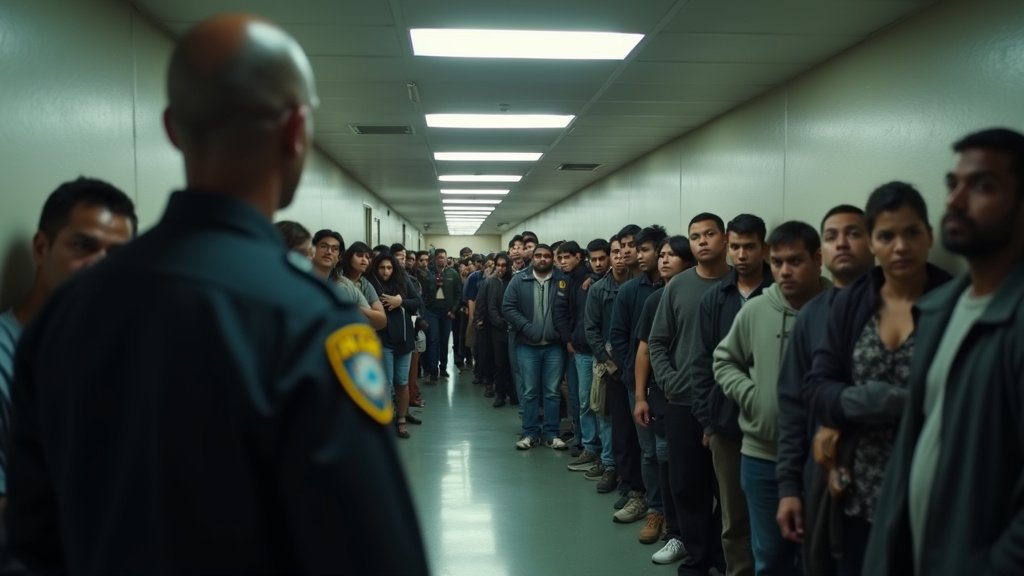The Trump administration has intensified its efforts to pressure “sanctuary” jurisdictions into greater cooperation with U.S. Immigration and Customs Enforcement (ICE) and other federal immigration authorities. Despite executive orders, threats of lawsuits, and the deployment of federal agents, most cities and counties with sanctuary policies are refusing to budge, leading to a protracted legal and political standoff. This ongoing news highlights a deep divide between federal immigration enforcement priorities and local autonomy.
The Administration’s Multifaceted Pressure Campaign
President Trump’s administration has launched a significant campaign aimed at compelling cities and states to abandon sanctuary policies, which limit local law enforcement’s cooperation with federal immigration enforcement. These policies, which vary in definition but generally restrict local police from sharing information about individuals’ immigration status with federal agencies like ICE or honoring ICE detainer requests, are viewed by the administration as deliberate obstruction of federal law. The White House has argued that these jurisdictions “protect criminals” and endanger Americans. To enforce its agenda, the administration has utilized executive orders, threatened lawsuits and funding cuts, and directed ICE to surge deportation agents and conduct high-profile enforcement operations in cities such as Chicago and Los Angeles. The Department of Homeland Security (DHS) has also compiled lists of jurisdictions deemed non-compliant, though these lists have sometimes faced pushback and been taken down.
Sanctuary Cities’ Defiance and Legal Defenses
Leaders in numerous sanctuary cities and states, including Chicago, Boston, Portland, and California, have publicly declared their intention to resist federal demands. Their primary arguments center on the importance of building trust between immigrant communities and local law enforcement. They contend that cooperation with ICE erodes this trust, making residents fearful of reporting crimes or seeking essential services, ultimately undermining public safety. Many jurisdictions are also leveraging legal defenses, primarily citing the Tenth Amendment’s anti-commandeering doctrine, which prohibits the federal government from compelling state and local governments to enforce federal laws. This has led to successful legal challenges, with federal judges blocking federal funding cuts and troop deployments. Chicago Mayor Brandon Johnson, for instance, issued an executive order barring ICE from using city property for staging operations and filed a lawsuit to block federal troop deployment.
The Battle in the Courts and Operational Realities
The administration has faced a string of legal setbacks. Federal judges have issued injunctions preventing the withholding of federal funds and blocking the deployment of troops to cities like Portland and Chicago. While a few jurisdictions, such as Louisville, Kentucky, and the state of Nevada, have acquiesced to federal pressure and altered their policies to avoid intensified federal scrutiny and raids, the vast majority have maintained their stances. The impact of these sanctuary policies on ICE operations is a subject of debate. Proponents argue that limited cooperation forces ICE to conduct more visible, often neighborhood-based, enforcement actions rather than discreet jail arrests. Critics contend that these policies hinder ICE’s ability to apprehend individuals with criminal records, potentially allowing them to remain in communities. However, ICE’s own data suggests that while detainers may be harder to enforce in sanctuary jurisdictions, arrests of individuals without criminal records are increasing nationwide, complicating the narrative that sanctuary policies are the sole driver of such trends.
Background and Underlying Stakes
The sanctuary city movement has deep historical roots, gaining momentum in the 1980s as a response to the plight of Central American refugees fleeing civil wars and persecution. Churches and communities initially offered safe haven, and this advocacy later translated into formal city policies. The core of the debate lies in differing interpretations of the Constitution, federalism, and public safety. Proponents view sanctuary policies as upholding constitutional rights and fostering inclusive communities where all residents feel safe reporting crimes. Opponents argue that these policies undermine the rule of law by obstructing federal immigration enforcement and potentially shielding individuals who pose a public safety risk. The ongoing conflict underscores the tension between national immigration policy and local governance, with significant implications for immigrant populations and federal-state relations.
Conclusion
The confrontation between the Trump administration and sanctuary cities over immigration enforcement cooperation remains a significant and unresolved news story. While the federal government continues to exert pressure through various means, many local jurisdictions are steadfast in their commitment to protecting immigrant communities and upholding their interpretation of constitutional principles. The legal battles are ongoing, and the ultimate impact on immigration enforcement and community trust is still unfolding.





